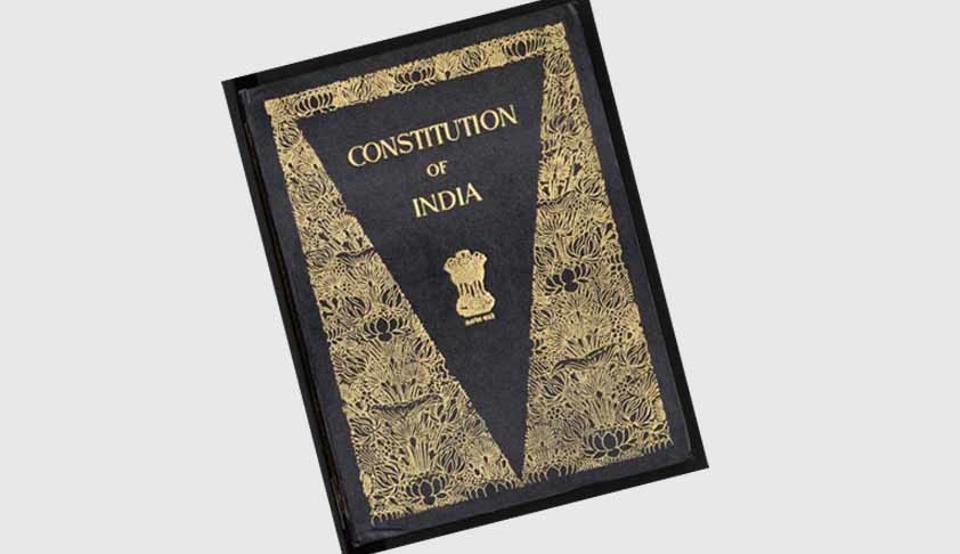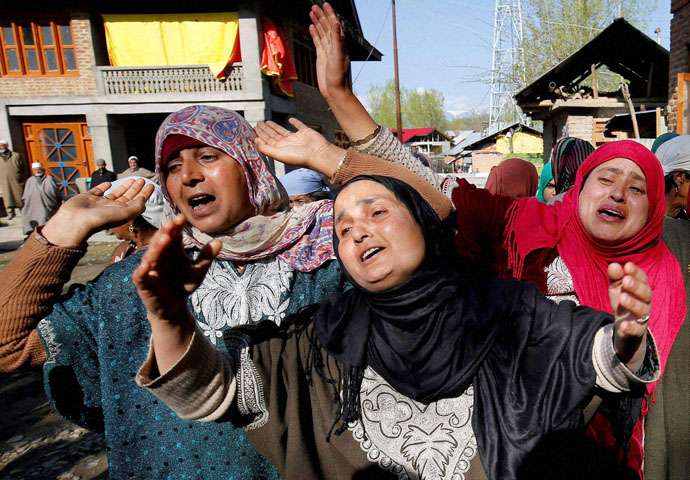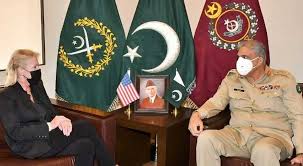
Image courtesy of Hindustan Times
Article 370 – Ieshan Vinay Misri
Now that finally the BJP Govt. has taken the giant leap (which I never thought any would have guts to) and abrogated the Art 370 in its entirety and have even gone a step further to bifurcate the state of Jammu and Kashmir (J&K) (instead of the familiar trifurcation) in to two Union Territories, time seems opportune to take a stock of things.
Background
So let’s start from the very start. Article 370 of the Indian Constitution comes under Part XXI and is titled as “Temporary Provisions with respect to the State of Jammu and Kashmir”. On the question of “Why the Article 370 was adopted” Gopalaswami Ayyangar one of Nehru’s confidant in the constituent assembly argued that Kashmir, unlike other princely states, was not yet ripe for integration.
India had already been at war with Pakistan over Jammu and Kashmir and while there was a ceasefire, the conditions in the state were still “unusual and abnormal.” Also, a good part of the State’s territory was still in the hands of “rebels and enemies.” In addition, the involvement of United Nations brought an international dimension to this conflict, an “entanglement” which would end only when the “Kashmir problem is satisfactorily resolved.”
Finally, Ayyangar argued that the “will of the people through the instrument of the [J&K] Constituent Assembly will determine the constitution of the State as well as the sphere of Union jurisdiction over the State.” To sum up, there was a hope that one day Jammu and Kashmir would fully integrate like other States of the Union (hence the use of the term “temporary provisions” in the title of the Article 370).
The full text of the Article 370:
“370. Temporary provisions with respect to the State of Jammu and Kashmir
(1) Notwithstanding anything contained in this Constitution,—
(a) the provisions of article 238 shall not apply now in relation to the state of Jammu and Kashmir;
(b) the power of Parliament to make laws for the said state shall be limited to—
(i) those matters in the Union List and the Concurrent List which, in consultation with the Government of the State, are declared by the President to correspond to matters specified in the Instrument of Accession governing the accession of the State to the Dominion of India as the matters with respect to which the Dominion Legislature may make laws for that State; and
(ii) such other matters in the said Lists as, with the concurrence of the Government of the State, the President may by order specify.
Explanation: For the purpose of this article, the Government of the State means the person for the time being recognized by the President on the recommendation of the Legislative Assembly of the State as the Sadr-i-Riyasat (now Governor) of Jammu and Kashmir, acting on the advice of the Council of Ministers of the State for the time being in office.
(c) the provisions of article 1 and of this article shall apply in relation to that State;
(d) such of the other provisions of this Constitution shall apply in relation to that State subject to such exceptions and modifications as the President may by order specify:
Provided that no such order which relates to the matters specified in the Instrument of Accession of the State referred to in paragraph (i) of sub-clause (b) shall be issued except in consultation with the Government of the State:
Provided further that no such order which relates to matters other than those referred to in the last preceding proviso shall be issued except with the concurrence of that Government.
(2) If the concurrence of the Government of the State referred to in paragraph (ii) of sub-clause (b) of clause (1) or in the second provision to sub-clause (d) of that clause be given before the Constituent Assembly for the purpose of framing the Constitution of the State is convened, it shall be placed before such Assembly for such decision as it may take thereon.
(3) Notwithstanding anything in the foregoing provisions of this article, the President may, by public notification, declare that this article shall cease to be operative or shall be operative only with such exceptions and modifications and from such date as he may specify:
Provided that the recommendation of the Constituent Assembly of the State referred to in clause (2) shall be necessary before the President issues such a notification.”
The Article 370 was drafted in 1947 to secure the smooth integration of the princely state of Jammu and Kashmir which had just acceded to the then dominion of India like many other princely states in a transitional manner. In its essentials the article defines the centre state relations between the state of Jammu and Kashmir and the Union by outlining what kind of laws, acts or amendments enacted by the central legislature i.e. the Parliament would extend to J&K automatically, thus virtually limiting the applicability of the constitution of India to the and allowing it to have its own constitution enacted through a separate state constituent assembly. On the other side one of the biggest misunderstanding is the belief that the “autonomy of J&K” as envisaged in the Constituent Assembly is still as it was originally conceived. But a series of Presidential Orders from time to time have eroded Article 370 substantially. While the 1950 Presidential Order and the Delhi Agreement of 1952 defined the scope and substance of the relationship between the Centre and the State with the support of the Sheikh, the subsequent series of Presidential Orders have made most Union laws applicable to the State.
In addition the Presidential order of 1954, officially The Constitution (Application to Jammu and Kashmir) Order, 1954 came into force on 14 May 1954 was made under the powers given to the President under Article 370 (1) (b). This led to extension of Fundamental rights of Indian constitution to the state of J&K. The state was also brought under the jurisdiction of Indian Supreme Court and at the same time the central government was given the power to declare national emergency in J&K under the same order.
On the other side this order led to the inclusion of Article 35A into the constitution which incorporates the saving of laws with respect to permanent residents of Jammu and Kashmir. Article 35A basically gave the carte blanche to the state legislature of J&K to define the classes of persons who are, or shall be, permanent residents of the State and to accord special privileges on to them with regards to education, employment in state government and with regards to acquiring the immovable property in the state.
Thus, it could be said the nature of centre state relation between the state of Jammu and Kashmir and the Union of India were truly federal.
Removal of Article 370
The demand for the removal of Article370 and for the complete integration of the state to the union of India is as old as the provision itself and it has been on of the key issues on the election manifesto of the Bhartiya Janata Party (BJP) in both 2014 and 2019 elections. And the recent act of the BJP ruled central government could be termed as them delivering on one of their manifesto promises.
On 5th of August 2019, the President of India issued an order which was introduced in the Rajya Sabha by the Home Minister. This Presidential order superseded The Constitution (Application to Jammu and Kashmir) Order, 1954. This order essentially states that all the provision of the Indian constitution will be applicable to the state of Jammu and Kashmir unlike the order of 1954 which made special provision where in only some specified provisions of the Indian constitution were applicable to the state of Jammu and Kashmir.
The full text of the Presidential order:
“The following Order made by the President is published for general information
THE CONSTITUTION (APPLICATION TO JAMMU AND KASHMIR) ORDER, 2019
In exercise of the powers conferred by clause (1) of Article 370 of the Constitution, the President, with the concurrence of the Government of State of Jammu and Kashmir, is pleased to make the following Order:
1. (1) This Order may be called the Constitution Application to Jammu and Kashmir) Order, 2019.
(2) It shall come into force at once, and shall thereupon supersede the Constitution (Application to Jammu and Kashmir) Order, 1954 as amended from time to time.
2. All the provisions of the Constitution, as amended from time to time, shall apply in relation to the State of Jammu and Kashmir and the exceptions and modifications subject to which they shall so apply shall be as follows: To article 367, there shall be added the following clause, namely:”(4) For the purposes of this Constitution as it applies in relation to the State of Jammu and Kashmir
(a) references to this Constitution or to the provisions thereof shall be construed as references to the Constitution or the provisions thereof as applied in relation to the said State:
b) references to the person for the time being recognized by the President on the recommendation of the Legislative Assembly of the State as the Sadar-i-Riyasat of Jammu and Kashmir, acting on the advice of the Council of Ministers of the State for the time being in office, shall be construed as references to the Governor of Jammu and Kashmir:
(c) references to the Government of the said State shall be construed as including references to the Governor of Jammu and Kashmir acting on the advice of his Council of Ministers, and
(d) in the proviso to clause (3) of Article 370 of this Constitution, the expression “Constituent Assembly of the State referred to in clause (2)” shall read “Legislative Assembly of the State”.”
RAM NATH KOVIND,
President”
One of the immediate implications of this order is that it renders Article 370 annulled and as a consequence, Article 35A too stands nullified. In addition, the separate constitution and the state flag of Jammu and Kashmir also stands abolished. This takes away the monopoly of the legislature of Jammu and Kashmir to define the permanent residents of the state, the power accorded to it by Article 35A which has been deemed to be unjust and discriminatory towards the women in the state as the state’s citizenship act disenfranchised the progeny of female permanent resident who married a non-permanent resident, whereas no such penalties were imposed on the male permanent residents who married any non-permanent resident. Further abrogation has cleared the way for west-Pakistan refugees in J&K to get their long demand of citizenship and all the benefits that entail.
In context of centre-state relationship and in terms of distribution of power, the residuary powers that hitherto resided with the state legislature of J&K would shift back to the union legislature as in case of other states. As such for every such law promulgated by the Union Parliament for whole of the nation will now automatically extend to J&K unlike like GST etc, where J&K had to promulgate a parallel law just stay at par with rest of the nation.
Similarly the Panchayats in J&K will come at par with those of rest of the states as now they would be organized under the “part IX-The Panchayat” of the constitution itself instead of the J&K-state Panchayati raj act which had a pressing need of reforms. This should strengthen the on ground local representation.
On the economic side removal of constraints on buying immovable property would attract investments which could stir the economic activities in the right positive direction giving boost to economy which till now is heavily dependent either on agriculture and allied activities or on the seasonal tourism industry. This would in turn help in infrastructural development in which the state is considerably lagging behind.
Among many other things the centre would now also have the power to proclaim financial emergency in the state under Article 360 of the constitution
The divisions other than Kashmir have always complained that due to Kashmiri domination in the state’s political scene and the legislature the aids and funds from the centre were never fairly distributed thus leading to a developmental disparity especially in far-flung areas of Ladakh division. Now that scrapping of the Article 370 has been complimented with the bifurcation of the state in to two union territories i.e. the UT of J&K and UT of Ladakh (which also was a long standing demand of people from that division) this mismanagement and misappropriation of funds could be minimized. Meanwhile it is expected that a delimitation of parliamentary and assembly constituencies will be undertaken before the conduction of elections in the new UT of J&K. Many in Jammu division see it as a solution to skewed representation in erstwhile state of J&K.
Things are still unfolding, and it remains to be seen how this bold if not radical step of removal of Article370 and bifurcation of the state helps in the solution of the problem in the state and how it pans out in the long run on other parameters.



Comments